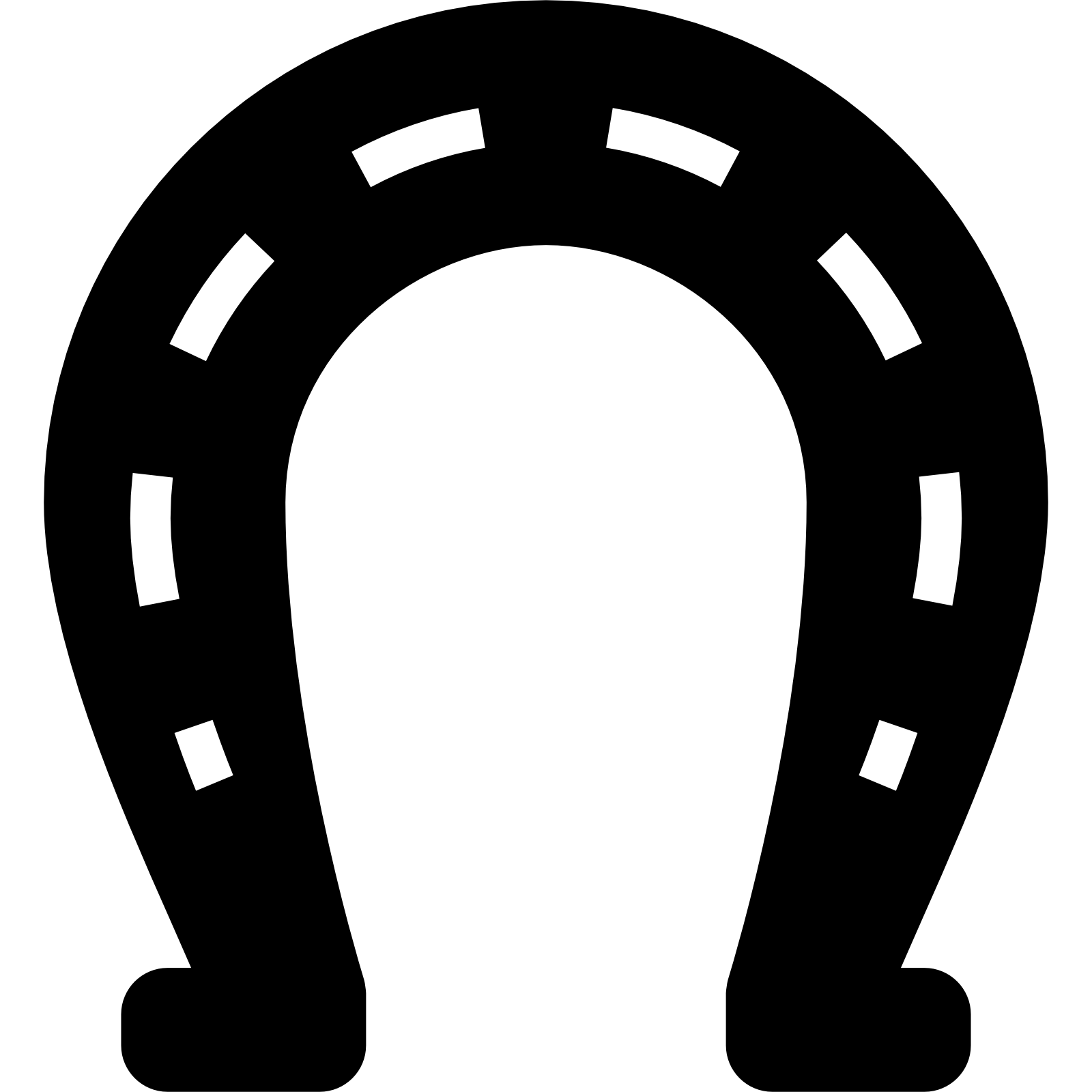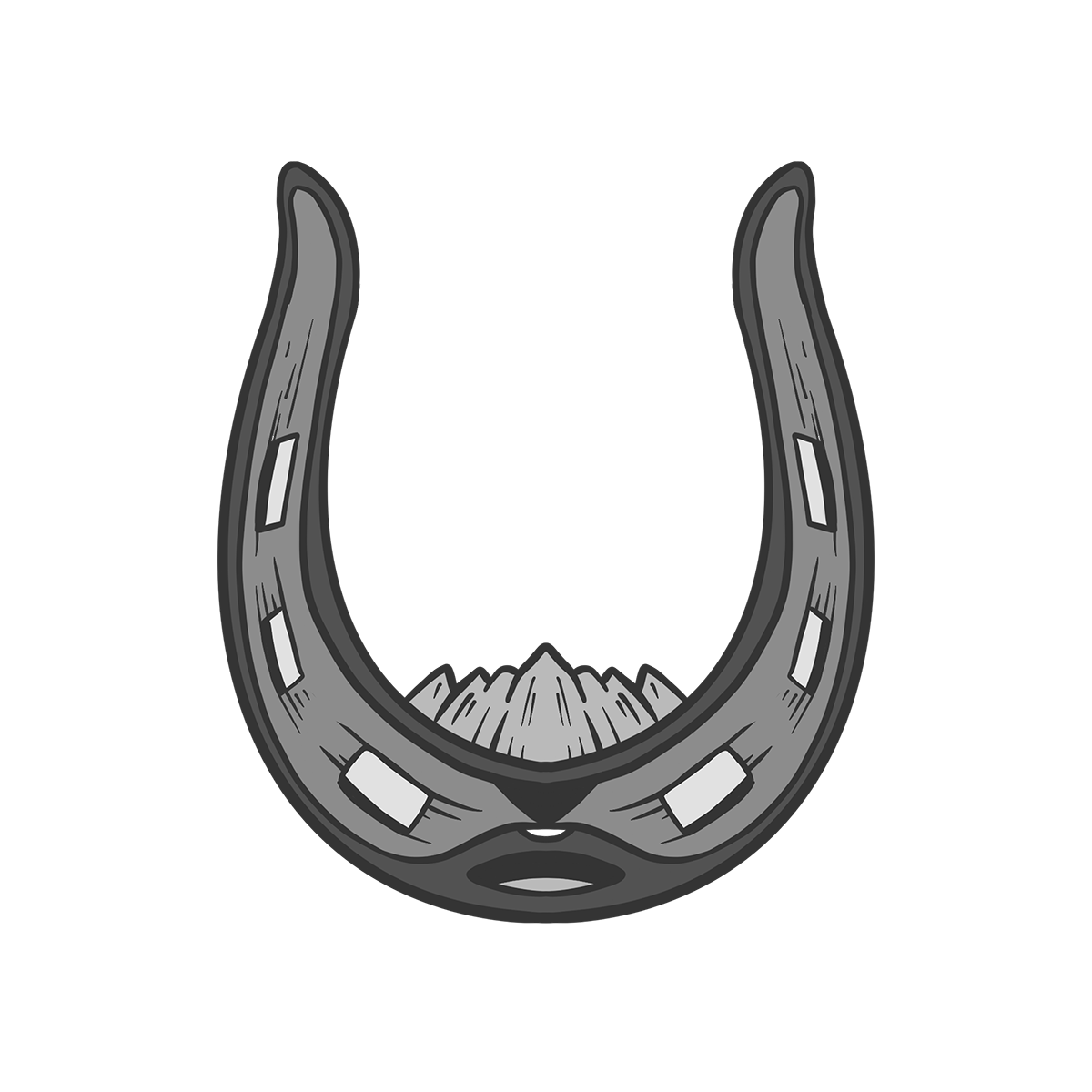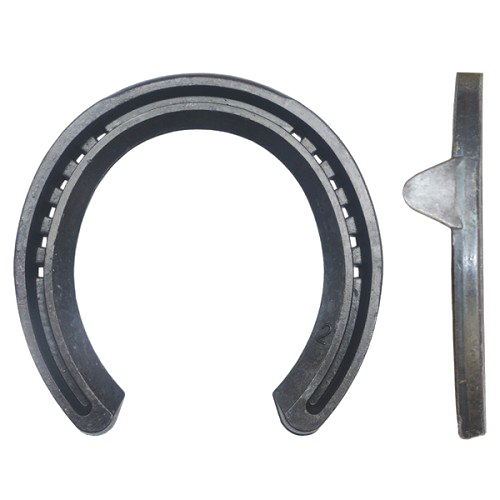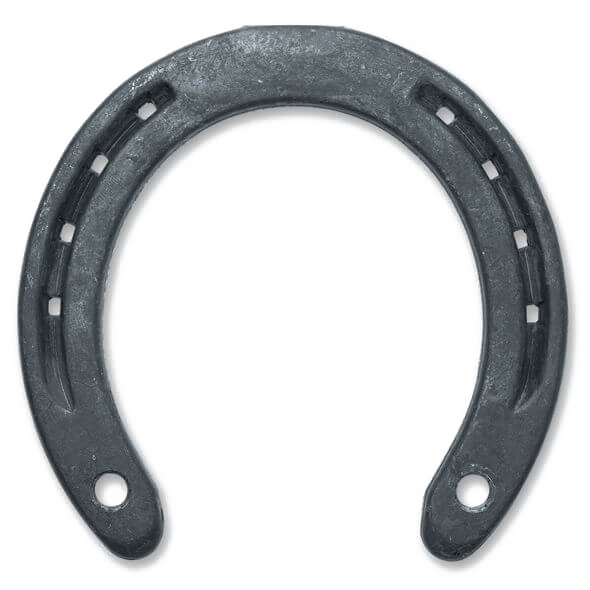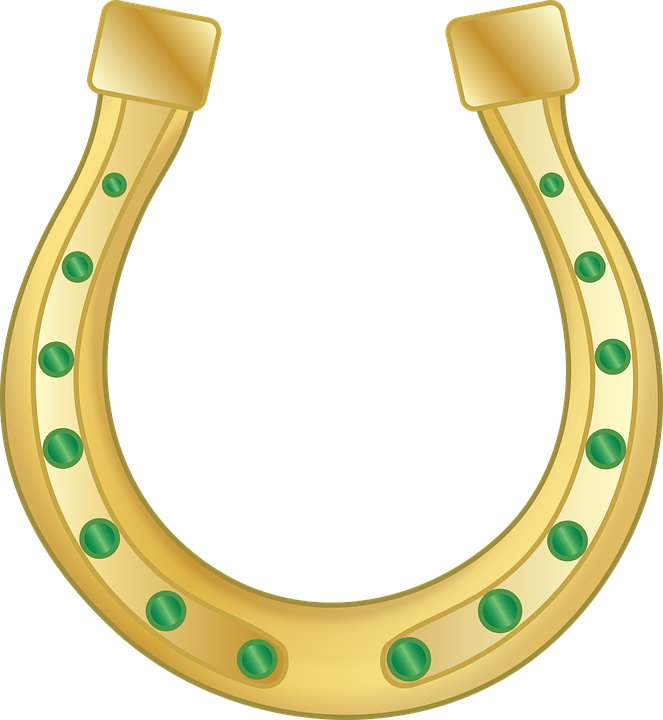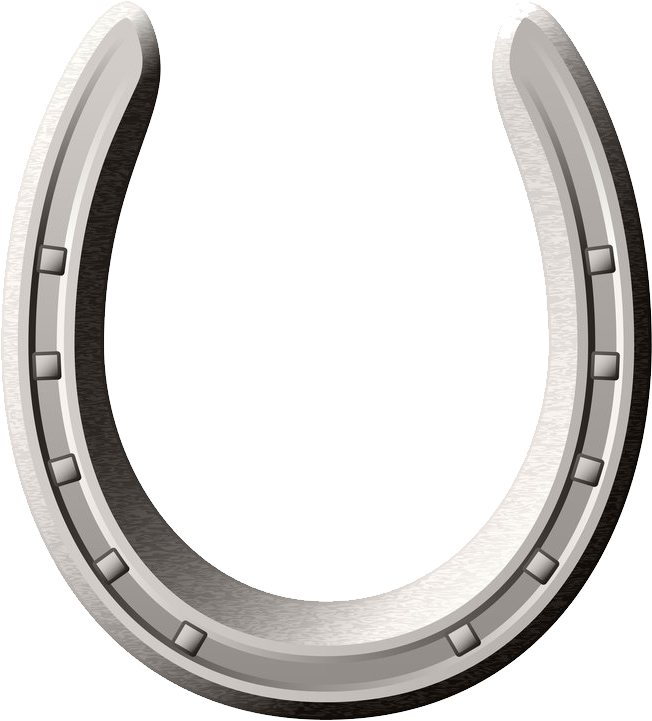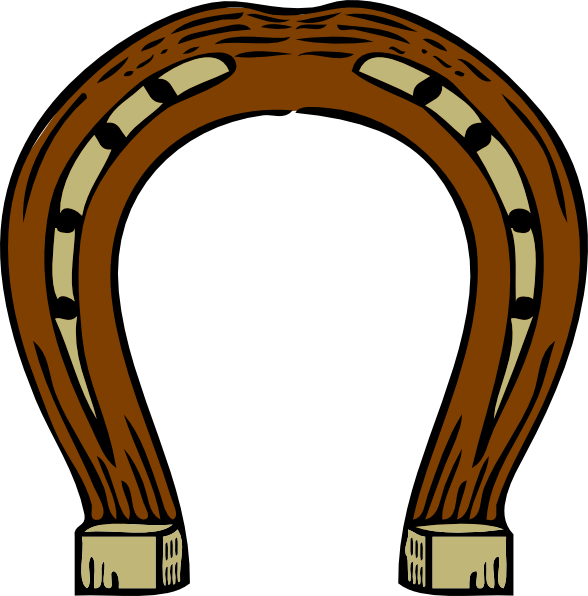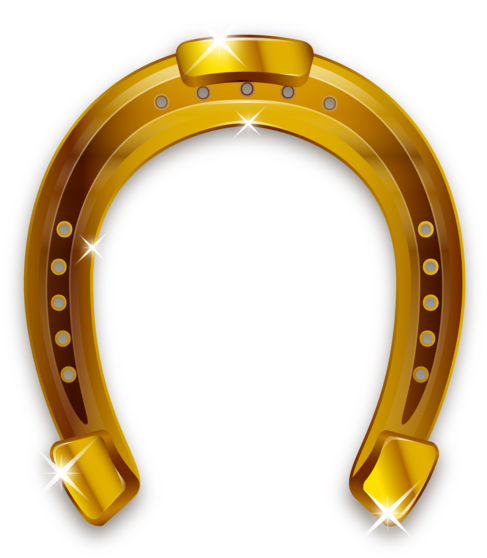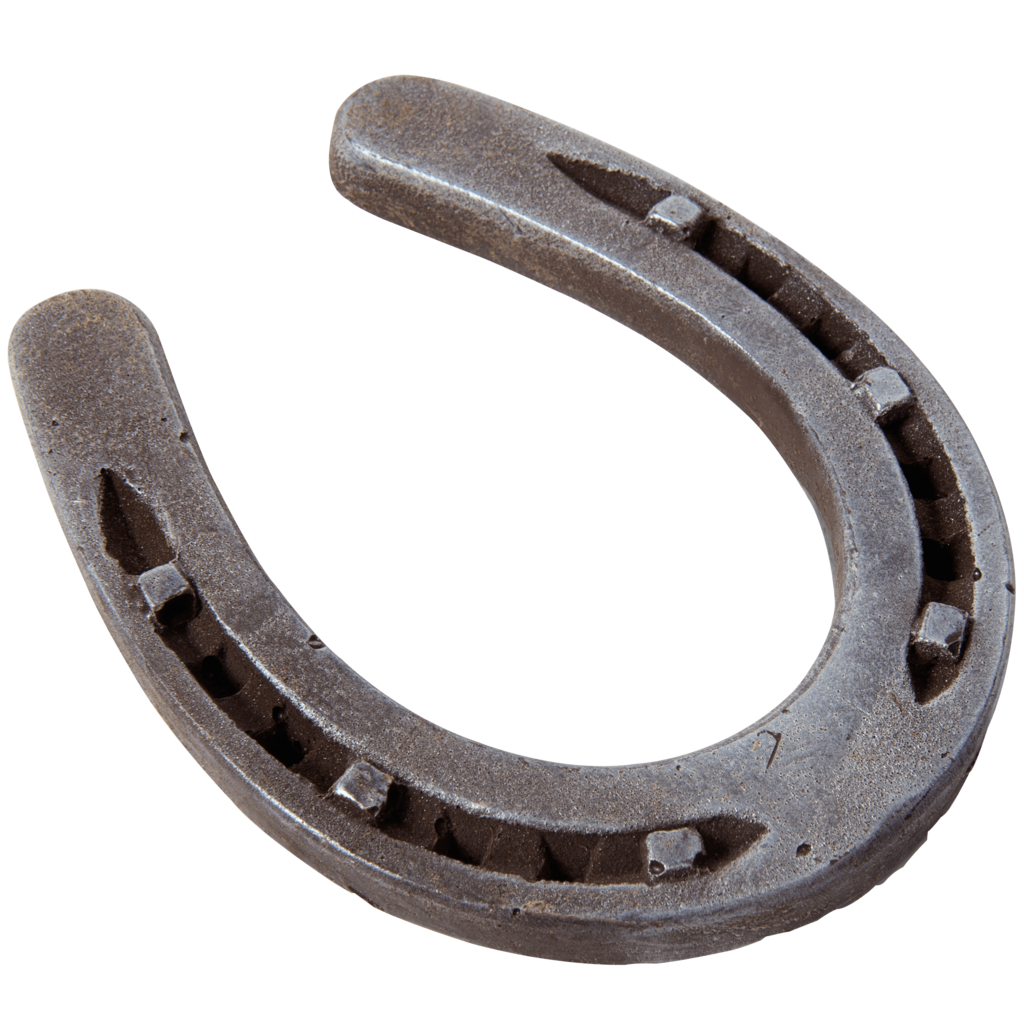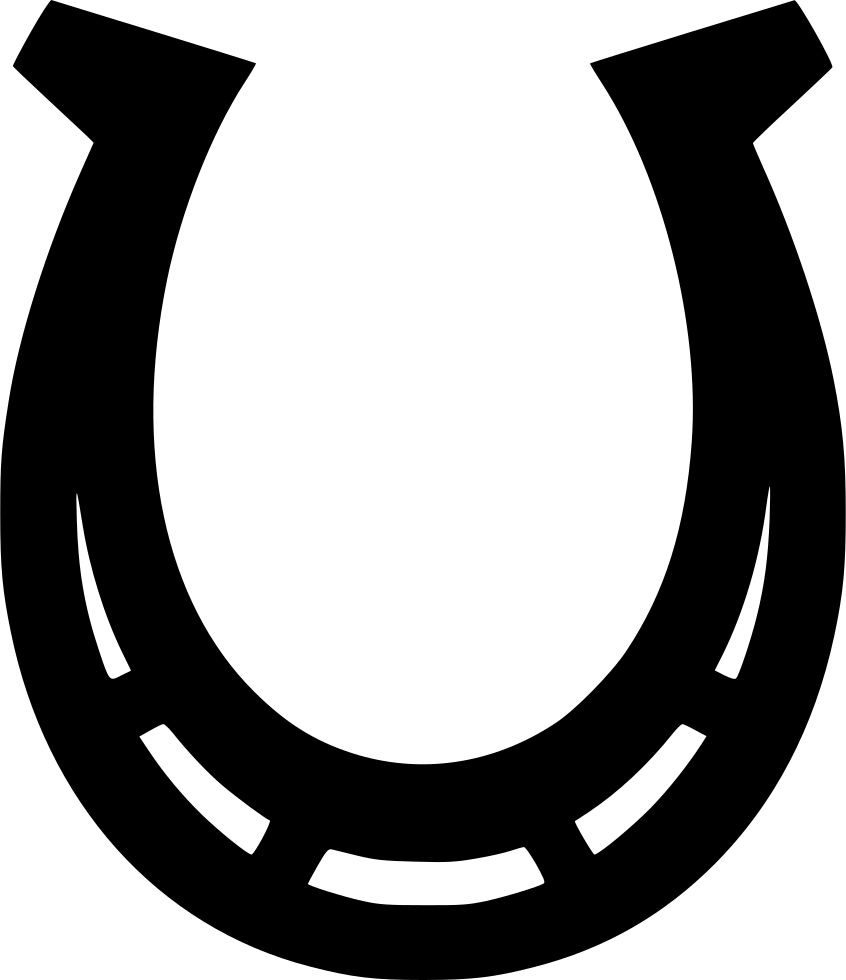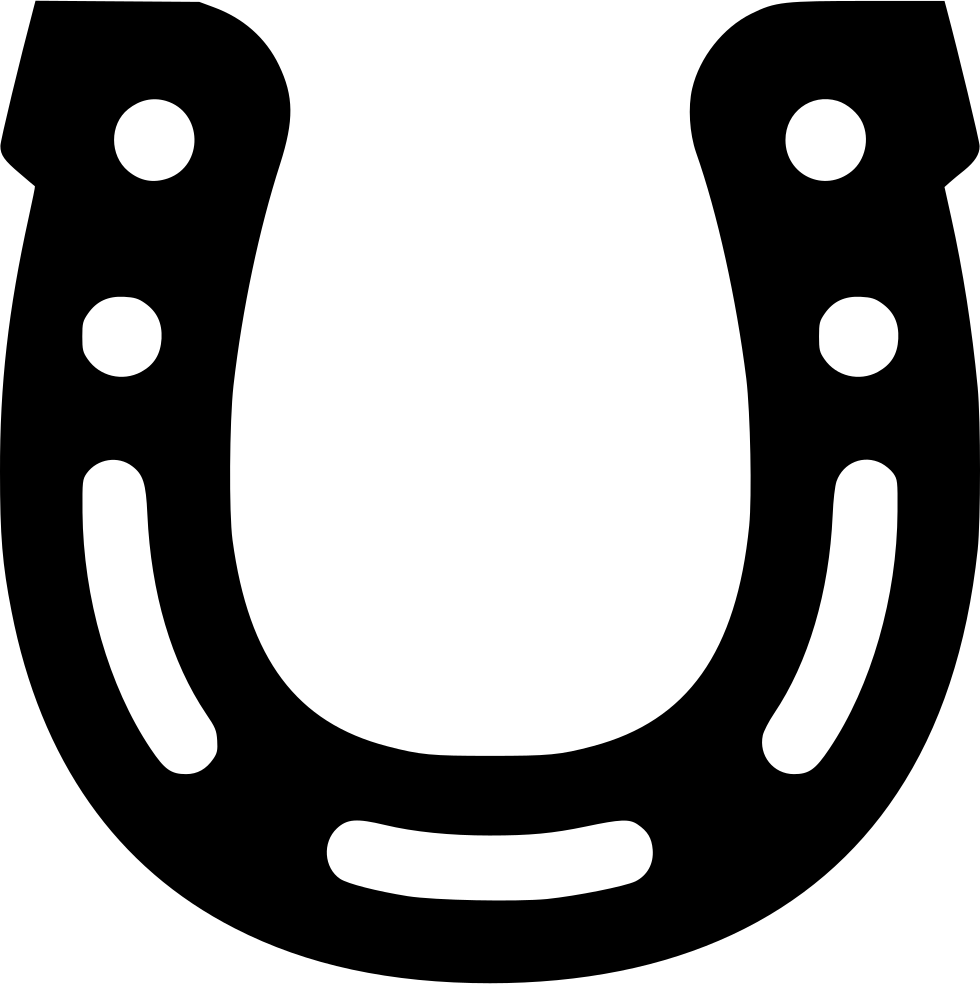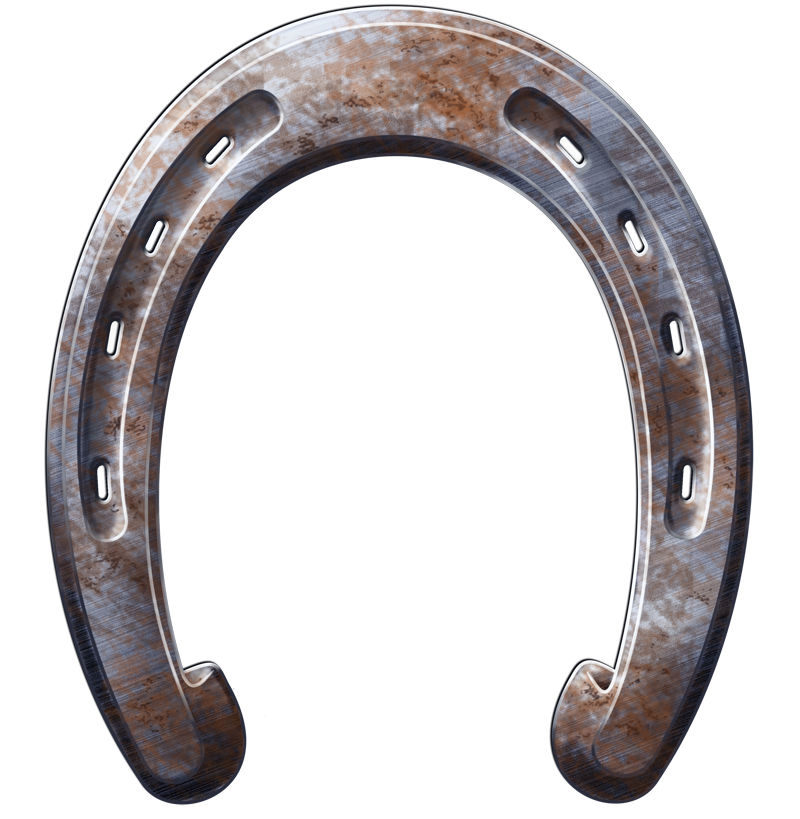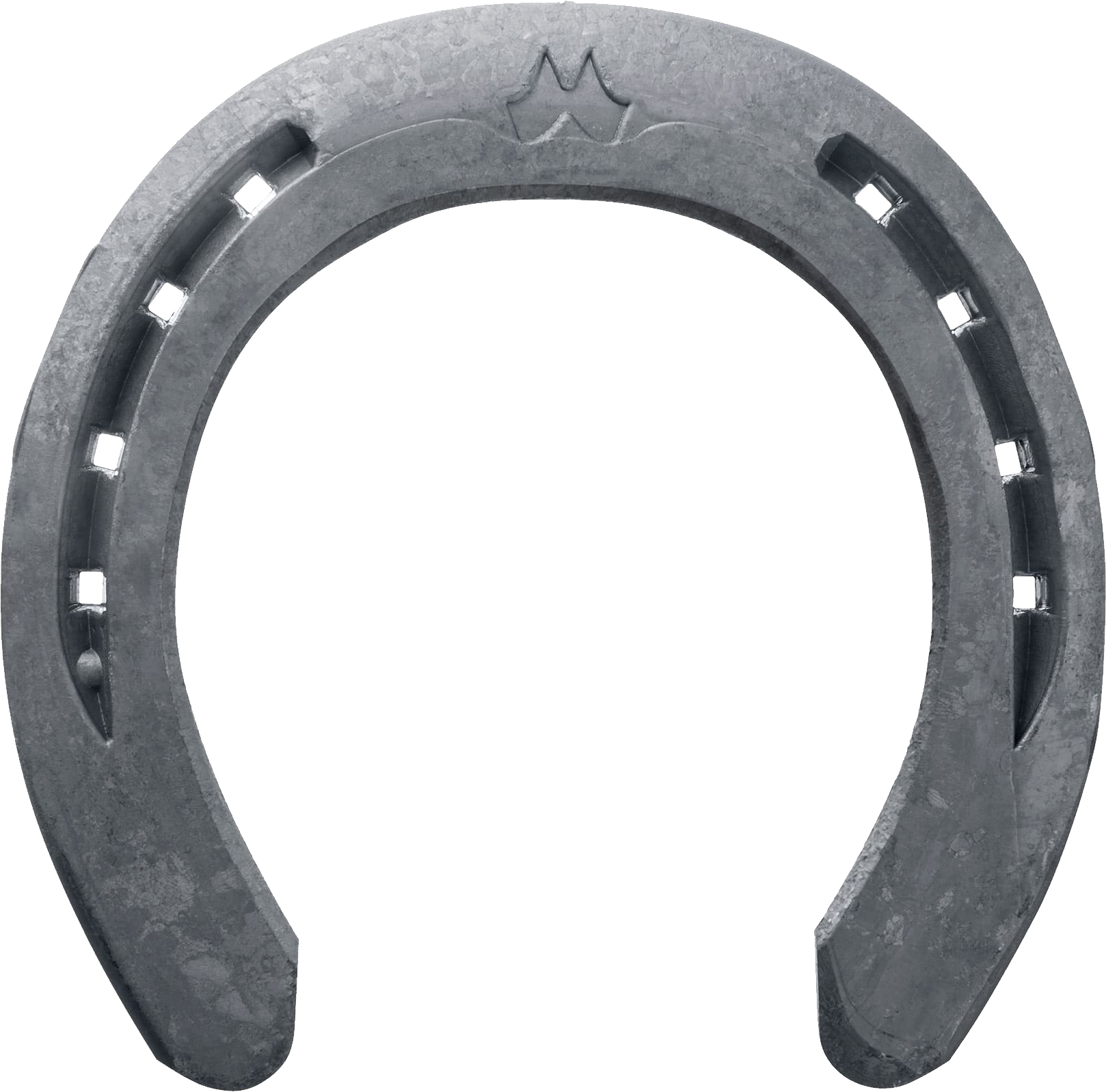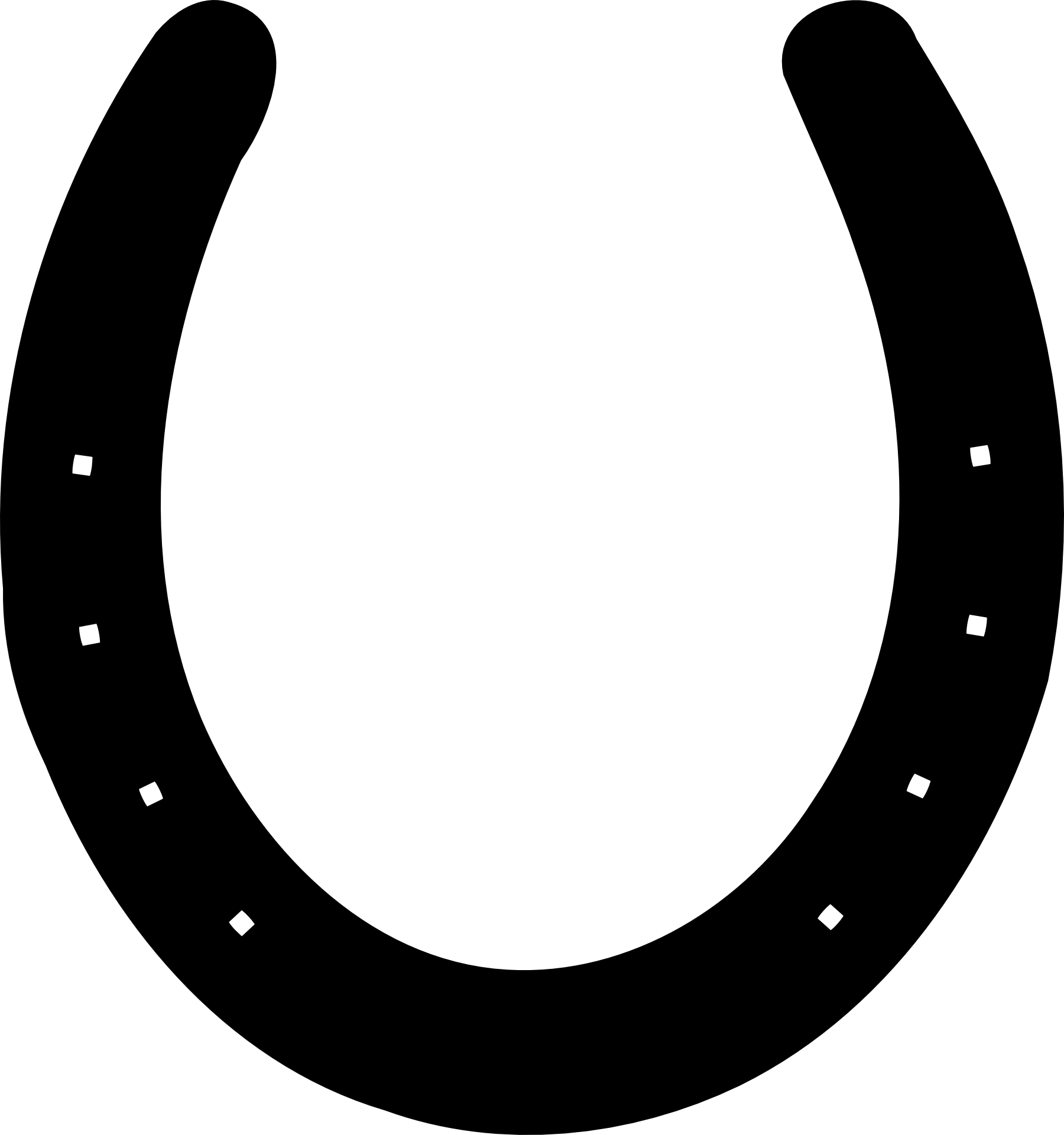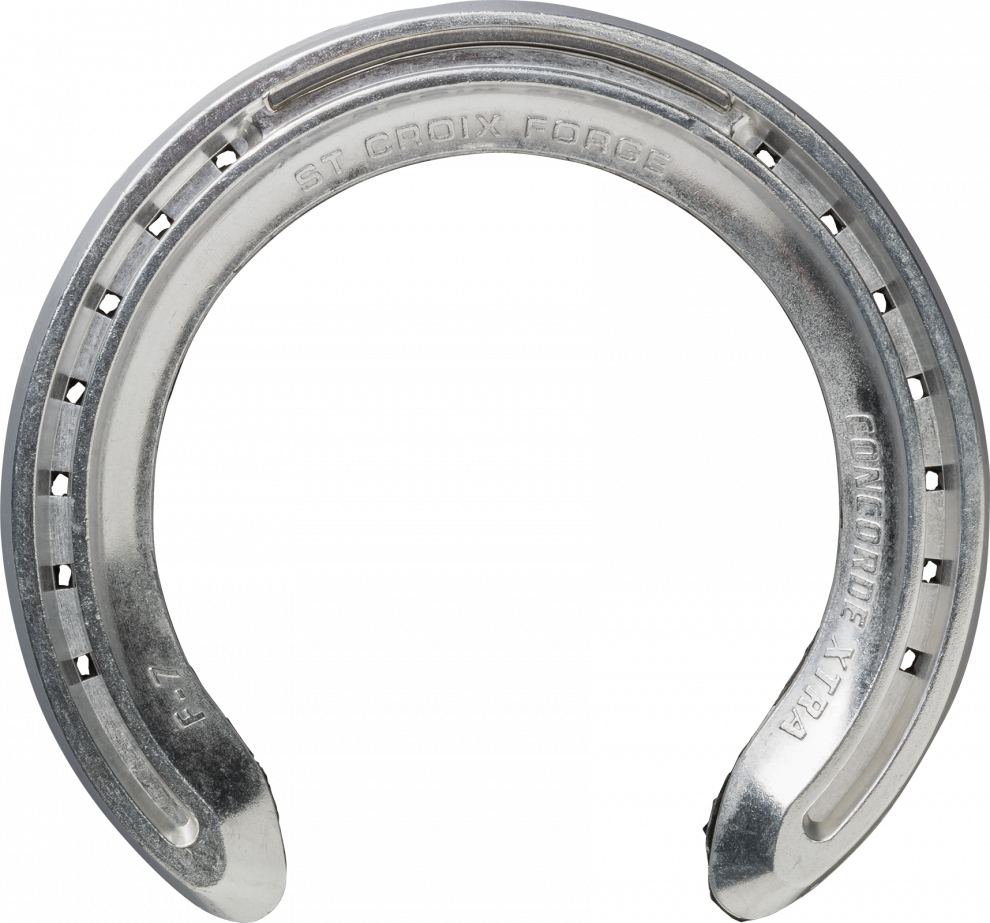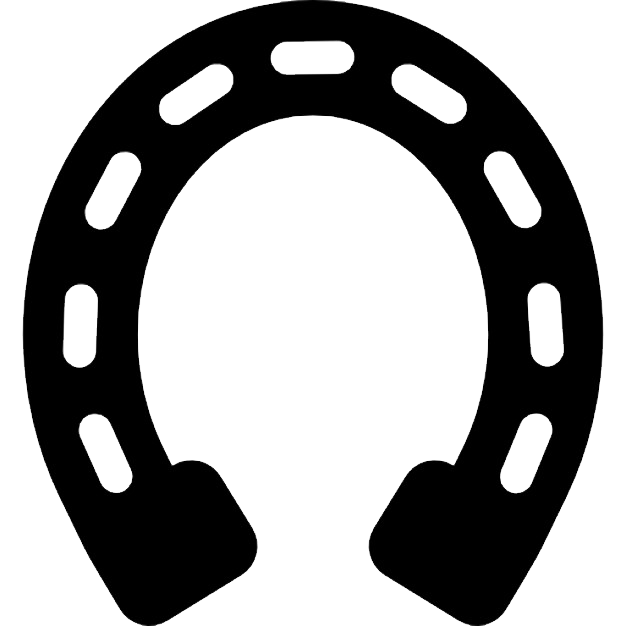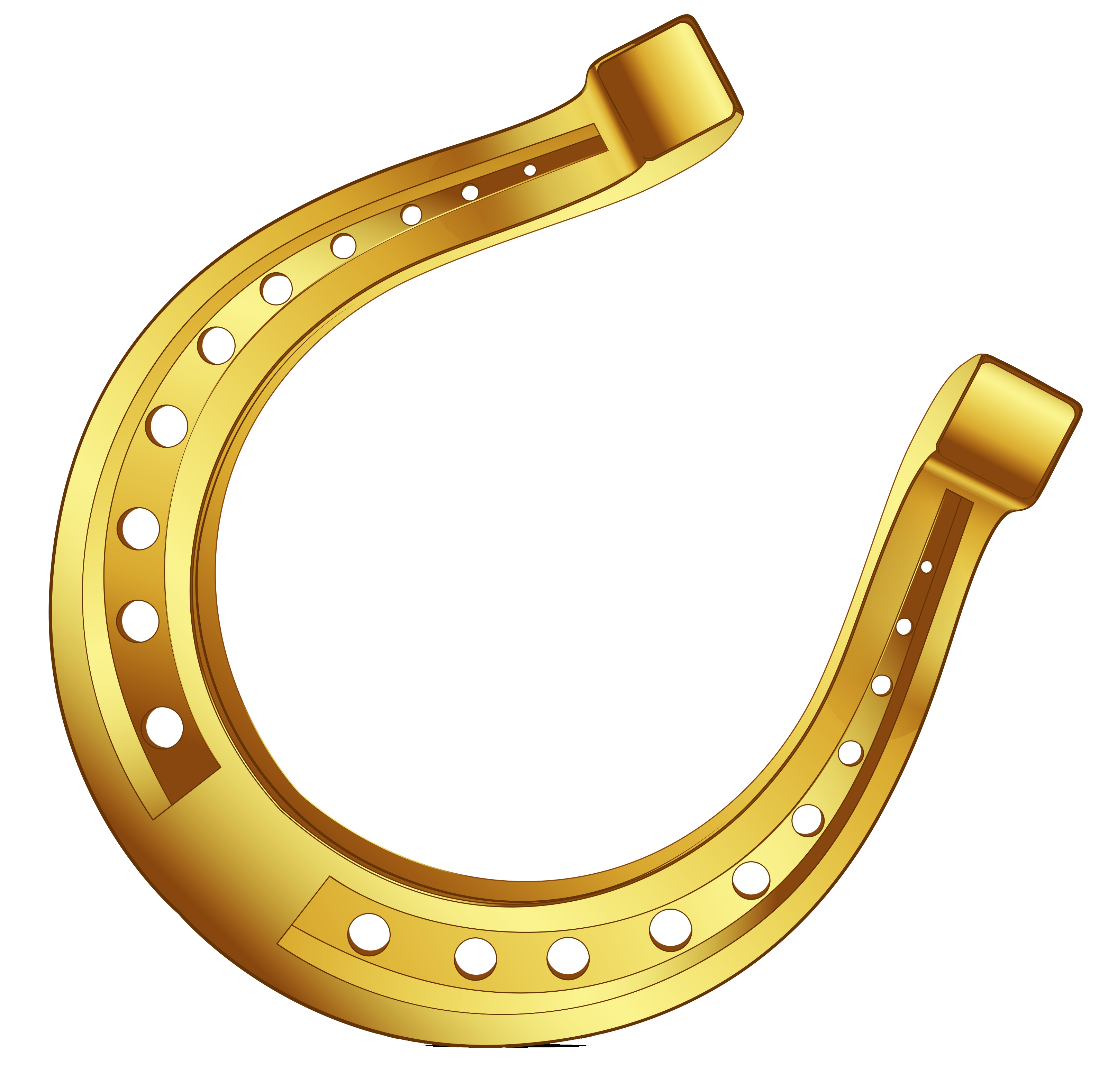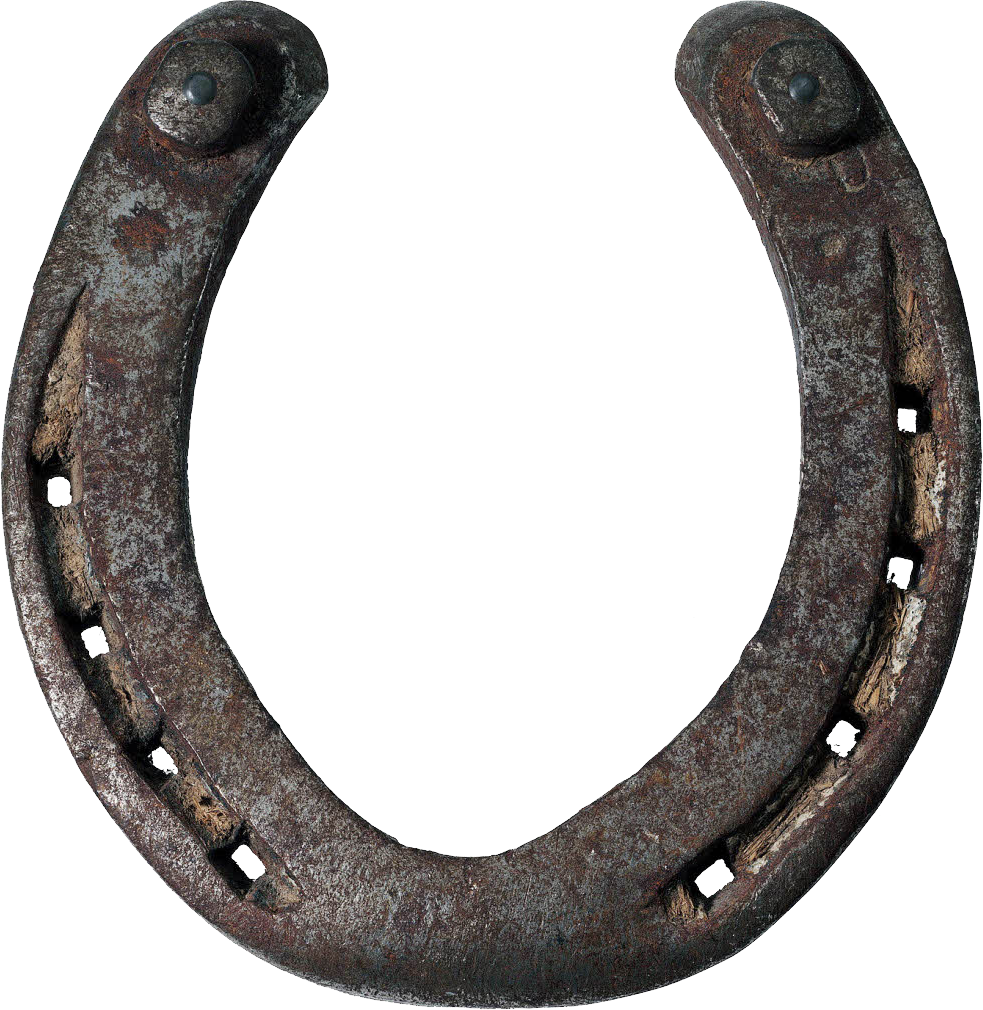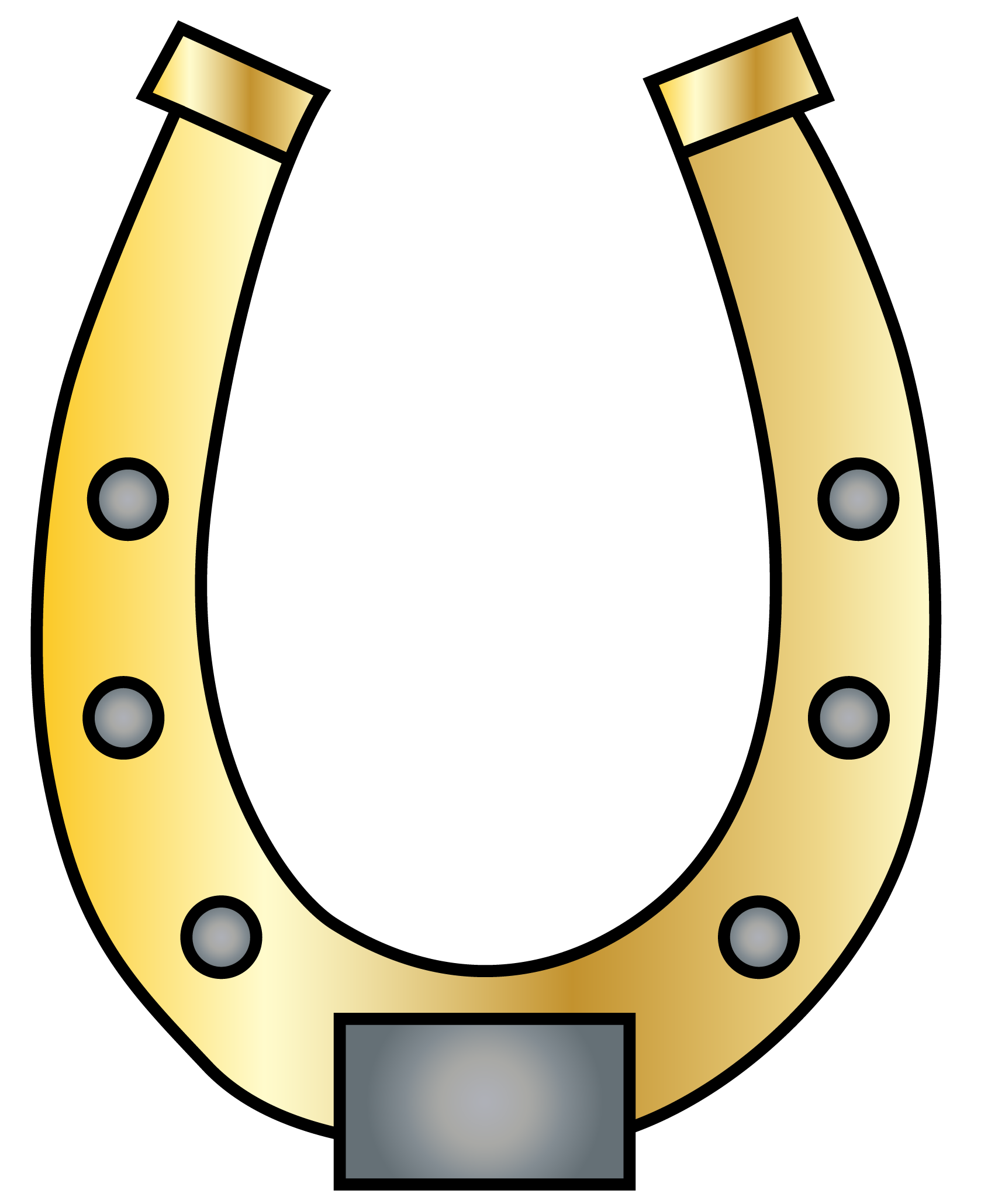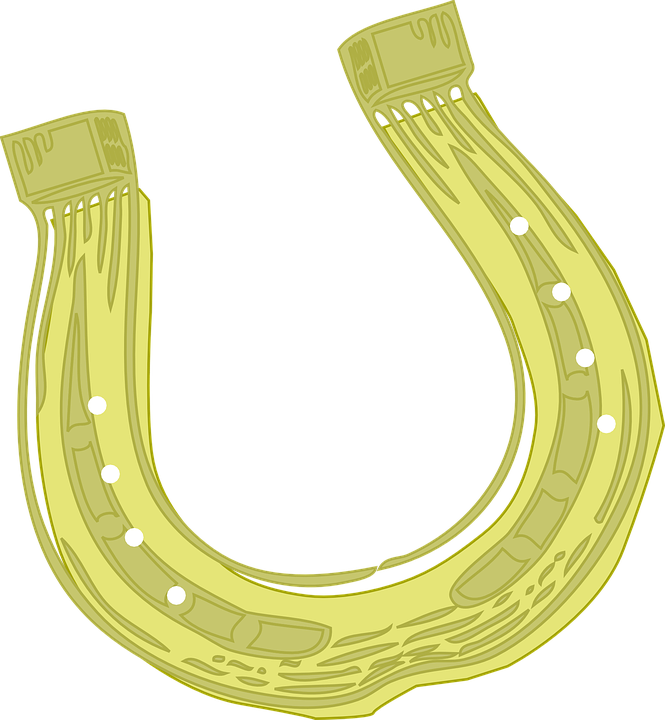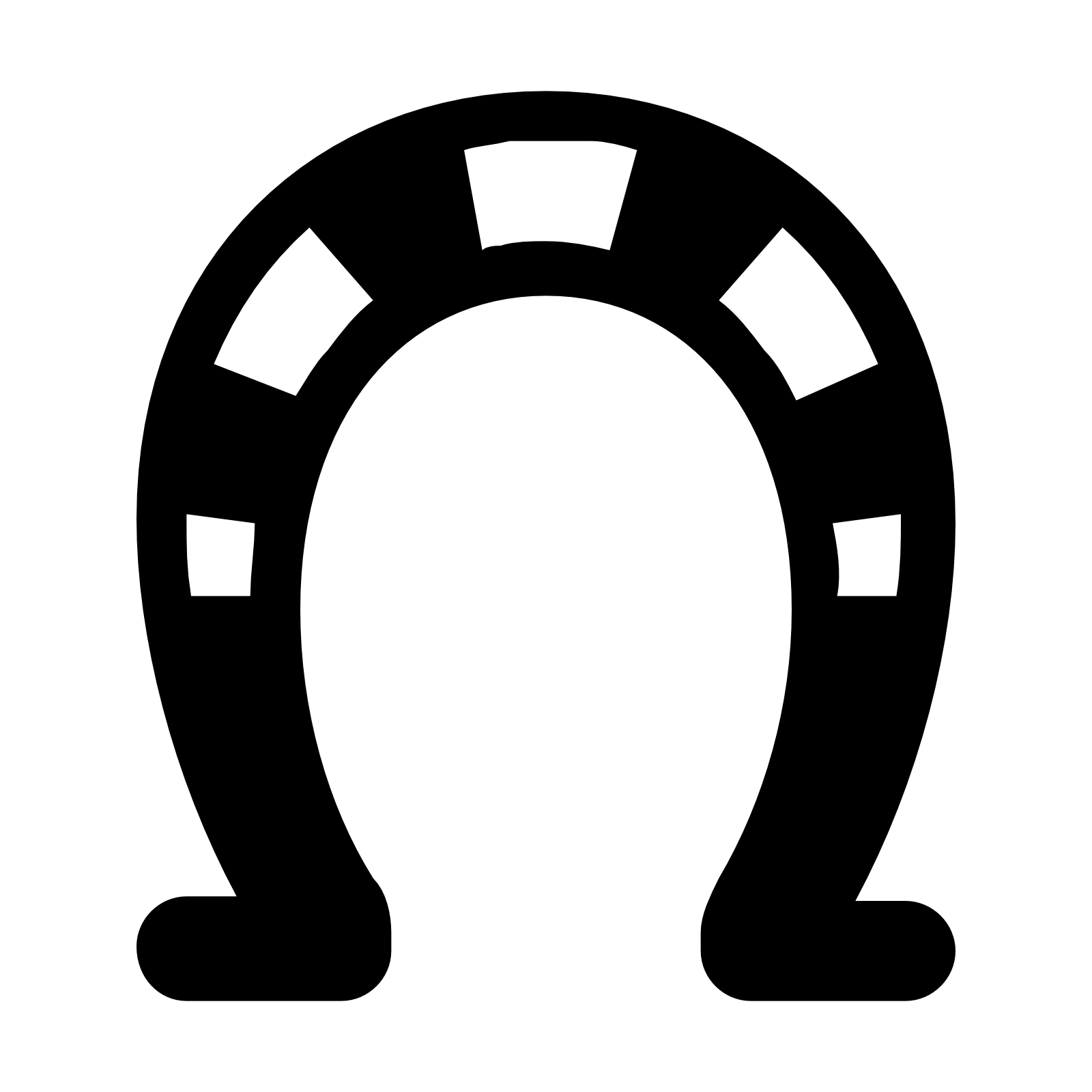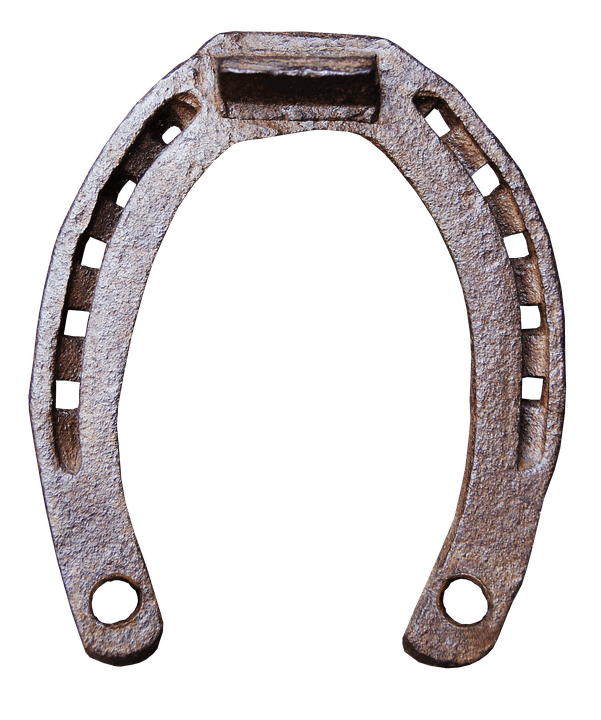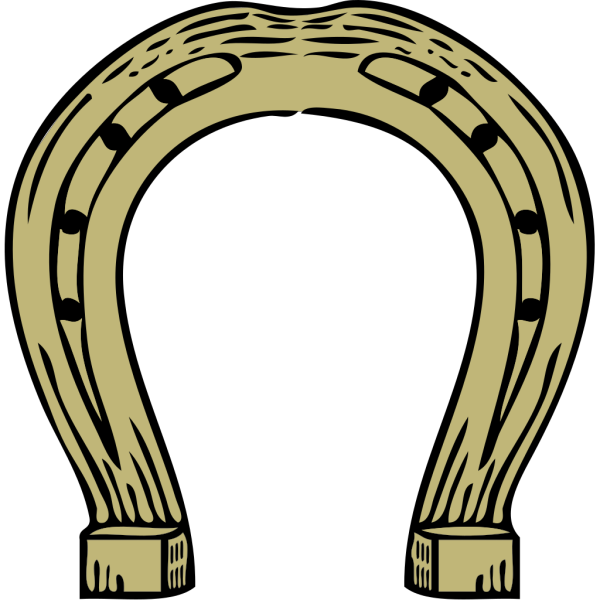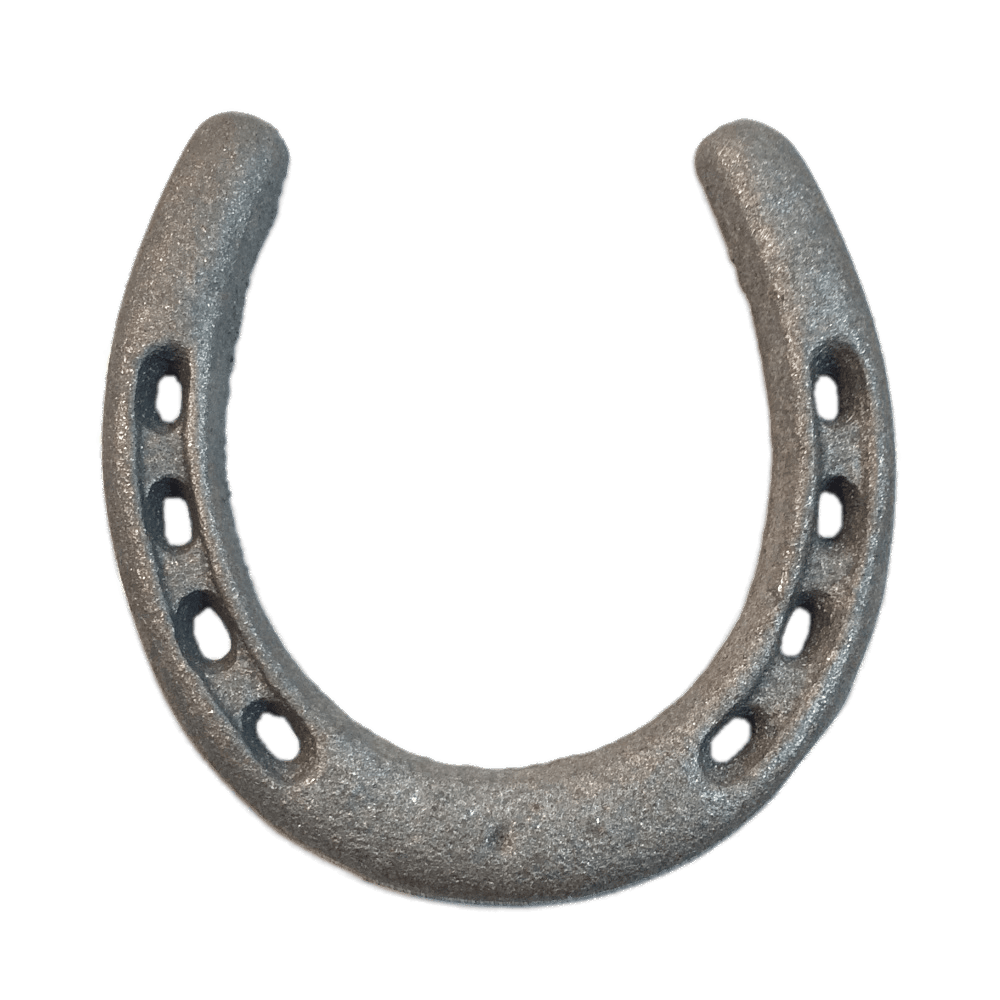Download top and best high-quality free Horseshoe PNG Transparent Images backgrounds available in various sizes. To view the full PNG size resolution click on any of the below image thumbnail.
License Info: Creative Commons 4.0 BY-NC
A horseshoe is a manufactured object that protects a horse’s hoof from wear. It is usually made of metal, although it can also be produced partially or entirely of contemporary synthetic materials. Shoes are generally nailed through the insensitive hoof wall, which is physically similar to the human toenail but considerably bigger and thicker, on the hooves’ palmar surface (ground side). There are, however, instances where shoes are bonded.
Horseshoe fitting is a skilled profession performed by a farrier who specialises in foot preparation, identifying possible lameness concerns, and fitting proper shoes with corrective measures as needed. Horseshoeing is prohibited to persons with certain credentials and expertise in some nations, like as the United Kingdom. Professional organisations provide certification programmes that publicly identify competent persons in other countries, such as the United States, where professional licencing is not required by law.
Horseshoes come in a range of materials and designs, each designed for a certain type of horse and the task they undertake. Steel and aluminium are the most frequent materials, although specialty shoes may also utilise rubber, plastic, magnesium, titanium, or copper. Steel is commonly used in activities that need a robust, long-lasting shoe, including as polo, eventing, show jumping, and western riding. Aluminum shoes are lighter, which makes them popular in horse racing when a lighter shoe is required; they also assist certain forms of movement, making them popular in the dressage discipline. “Caulkins,” “caulks,” or “calks” are protrusions at the toe or heels of the shoe, or both, that give increased grip.
A horseshoe is considered to bring good luck when maintained as a talisman. Horseshoes is a popular throwing game that uses a stylised version of the horseshoe.
Working horses have been subjected to a variety of circumstances that result in hoof fracture or excessive wear since the horse’s domestication. Over and beyond any inherent hardness, ancient humans understood the necessity for extra protection for the walls (and sometimes the sole) of domestic horses’ feet. Horses’ hooves were wrapped in rawhide, leather, or other materials for both medicinal and wear protection purposes in ancient Asia. According to archaeological findings in the United Kingdom, the Romans appeared to have sought to protect their horses’ feet with a strap-on, solid-bottomed “hipposandal” that has a passing resemblance to the contemporary hoof boot.
Historians disagree on the horseshoe’s genesis. It’s difficult to find unambiguous archaeological evidence since iron was a precious commodity, and any worn out artefacts were typically reforged and reused. Although some people attribute it to the Druids, there is no concrete evidence to back this up. Four metal horseshoes with what seem to be nail holes were discovered in an Etruscan tomb dating from approximately 400 BC in 1897. A mention by Catullus, who died in 54 BC, backs up certain historians’ claims that the Romans created “mule shoes” sometime after 100 BC. However, rather than fastened horseshoes, these references to the usage of horseshoes and muleshoes in Rome might be referring to the “hipposandal””leather boots strengthened by an iron plate.
Existing references to the nailed shoe are very recent, first appearing about AD 900, but considering that several have been discovered in layers of soil, there may have been older applications. Prior to Emperor Leo VI’s reign, there are no existing references to fastened horseshoes, and by 973, there are only sporadic allusions to them. In AD 910, a reference to “crescent figured irons and their nails” is the first unambiguous written record of iron horseshoes. There is relatively little evidence of nailed-on shoes anterior to AD 500 or 600, however a horseshoe, complete with nails, was discovered in the tomb of the Frankish King Childeric I at Tournai, Belgium, in the 5th century AD.
Download Horseshoe PNG images transparent gallery.
- Horseshoe Vector PNG Images
Resolution: 1748 × 1653
Size: 95 KB
Image Format: .png
Download
- Horseshoe Vector PNG Photos
Resolution: 1600 × 1600
Size: 64 KB
Image Format: .png
Download
- Horseshoe Vector Transparent
Resolution: 512 × 512
Size: 27 KB
Image Format: .png
Download
- Horseshoe Vector PNG Clipart
Resolution: 1785 × 1493
Size: 34 KB
Image Format: .png
Download
- Horseshoe PNG Clipart
Resolution: 1200 × 1200
Size: 144 KB
Image Format: .png
Download
- Horseshoe Vector PNG HD Image
Resolution: 2520 × 2494
Size: 115 KB
Image Format: .png
Download
- Horseshoe
Resolution: 500 × 500
Size: 151 KB
Image Format: .png
Download
- Horseshoe PNG Picture
Resolution: 590 × 590
Size: 225 KB
Image Format: .png
Download
- Horseshoe Vector
Resolution: 512 × 512
Size: 3 KB
Image Format: .png
Download
- Horseshoe Vector PNG Picture
Resolution: 1845 × 1339
Size: 35 KB
Image Format: .png
Download
- Horseshoe Vector PNG Image HD
Resolution: 663 × 720
Size: 239 KB
Image Format: .png
Download
- Horseshoe PNG HD Image
Resolution: 652 × 721
Size: 213 KB
Image Format: .png
Download
- Horseshoe PNG Image HD
Resolution: 588 × 596
Size: 73 KB
Image Format: .png
Download
- Horseshoe No Background
Resolution: 487 × 558
Size: 178 KB
Image Format: .png
Download
- Horseshoe PNG Images HD
Resolution: 1024 × 1024
Size: 890 KB
Image Format: .png
Download
- Horseshoe Vector No Background
Resolution: 846 × 980
Size: 50 KB
Image Format: .png
Download
- Horseshoe Vector PNG Images HD
Resolution: 980 × 984
Size: 30 KB
Image Format: .png
Download
- Horseshoe PNG Free Image
Resolution: 800 × 819
Size: 533 KB
Image Format: .png
Download
- Horseshoe PNG Image File
Resolution: 1618 × 1597
Size: 1019 KB
Image Format: .png
Download
- Horseshoe Vector PNG Free Image
Resolution: 1800 × 1920
Size: 42 KB
Image Format: .png
Download
- Horseshoe Background PNG
Resolution: 990 × 923
Size: 839 KB
Image Format: .png
Download
- Horseshoe Vector PNG Image File
Resolution: 626 × 626
Size: 35 KB
Image Format: .png
Download
- Horseshoe PNG
Resolution: 3202 × 3156
Size: 1095 KB
Image Format: .png
Download
- Horseshoe Vector Background PNG
Resolution: 575 × 617
Size: 59 KB
Image Format: .png
Download
- Horseshoe PNG Pic
Resolution: 512 × 512
Size: 30 KB
Image Format: .png
Download
- Horseshoe PNG File
Resolution: 922 × 1000
Size: 349 KB
Image Format: .png
Download
- Horseshoe PNG Image
Resolution: 983 × 1010
Size: 1178 KB
Image Format: .png
Download
- Horseshoe PNG Photo
Resolution: 1678 × 2059
Size: 196 KB
Image Format: .png
Download
- Horseshoe Vector PNG Background
Resolution: 1000 × 929
Size: 322 KB
Image Format: .png
Download
- Horseshoe PNG Cutout
Resolution: 665 × 720
Size: 271 KB
Image Format: .png
Download
- Horseshoe Vector PNG
Resolution: 1600 × 1600
Size: 27 KB
Image Format: .png
Download
- Horseshoe PNG Images
Resolution: 601 × 720
Size: 125 KB
Image Format: .png
Download
- Horseshoe Vector PNG Pic
Resolution: 512 × 512
Size: 29 KB
Image Format: .png
Download
- Horseshoe Vector PNG File
Resolution: 4000 × 3113
Size: 1166 KB
Image Format: .png
Download
- Horseshoe Vector PNG Image
Resolution: 512 × 512
Size: 29 KB
Image Format: .png
Download
- Horseshoe Vector PNG Photo
Resolution: 990 × 990
Size: 277 KB
Image Format: .png
Download
- Horseshoe Vector PNG Cutout
Resolution: 990 × 990
Size: 167 KB
Image Format: .png
Download
- Horseshoe PNG Photos
Resolution: 600 × 600
Size: 91 KB
Image Format: .png
Download
- Horseshoe Transparent
Resolution: 1000 × 1000
Size: 206 KB
Image Format: .png
Download

